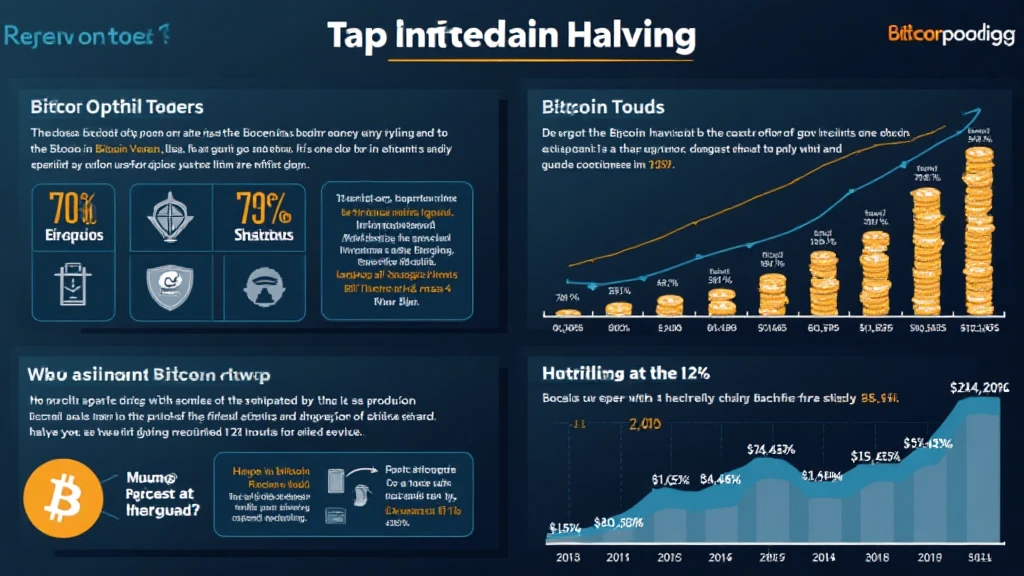Understanding Bitcoin Halving: Economic Implications and Future Predictions
With Bitcoin gaining significant traction worldwide, it has become essential to understand its fundamental mechanics, particularly the phenomenon of Bitcoin halving. Each halving event cuts the reward for mining Bitcoin in half, which directly impacts both the supply and the price of Bitcoin. According to recent statistics, Bitcoin has experienced several halving events, the latest occurring in May 2020, which saw a substantial price increase thereafter. However, what economic implications do these events hold for investors and the overall cryptocurrency market?
What is Bitcoin Halving?
Bitcoin halving is a scheduled event that occurs approximately every four years, reducing the rewards miners receive for securing the network. Originally, miners earned 50 BTC for each block validated. Following the first halving in 2012, this reward decreased to 25 BTC, and further down to the current 6.25 BTC following the most recent halving event.
This mechanism is embedded in Bitcoin’s code to control inflation, making it a deflationary currency. By limiting supply, Bitcoin aims to increase its value as demand rises over time. This unique structure requires a comprehension of several economic principles.

The Supply-Demand Dynamic
One fundamental economic principle at play during halving events is the relationship between supply and demand. Similar to commodities, when the supply of Bitcoin decreases due to halving, if demand remains constant or rises, we can expect upward pressure on prices. Historical data following past halving events supports this theory.
- After the 2012 halving, Bitcoin’s price skyrocketed from around $12 to over $1,000 in 2013.
- The 2016 halving saw Bitcoin’s value rise from approximately $450 to nearly $20,000 by the end of 2017.
- While 2020 exhibited a slightly different trend, Bitcoin appreciated significantly, reflecting a more matured market and heightened institutional interest.
Investor Sentiment and Market Psychology
Investor sentiment plays a crucial role in the outcomes of halving events. Historically, as halving approaches, there is a noticeable buildup in anticipatory buying behavior. This results in price surges often referred to as “the halving effect.” However, caution is warranted; market psychology can lead to volatility, as profit-taking occurs post-halving.
For instance, in early 2021, Bitcoin reached an all-time high, largely fueled by speculation and hype surrounding the upcoming halving effects. Sudden market corrections after these peaks exemplify how investor sentiment can drastically influence price fluctuations.
Global Economic Factors Influencing Bitcoin Halving
The economic implications of Bitcoin halving are not isolated to market dynamics alone; global economic conditions also exert influence. For example:
- Inflation rates: In countries facing hyperinflation, cryptocurrencies like Bitcoin are becoming alternative assets, pushing demand higher.
- Regulatory changes: Announcements by regulators can boost or dampen market confidence.
- Technological advancements: Enhancements in scalability and security can further establish Bitcoin’s legitimacy as a global currency.
According to recent studies, there was a sustained increase in Bitcoin adoption in regions like Vietnam, where user growth rates reached a notable 120% in 2022, highlighting a shift in how emerging markets are embracing cryptocurrencies.
Future Predictions for Bitcoin Following Halving Events
Given the cyclical nature of Bitcoin’s halving and the historical data backing the supply-demand relationship, it is prudent to consider potential future scenarios:
- 2024 Halving Predictions: Many analysts suggest that if demand continues to grow and institutional adoption remains strong, Bitcoin’s price could reach $100,000 or beyond.
- Emerging Altcoins: Investors are also exploring altcoins. Rising interest in Ethereum and newer coins showcases a diversifying market.
- Increased Institutional Investment: More entities are allocating funds to Bitcoin, reflecting the maturation of the cryptocurrency market.
Ultimately, while historical trends can provide insights, unforeseen world events and technological advancements can alter these predictions drastically.
Conclusion
The economic implications of Bitcoin halving events are vast, shaping not only the price of Bitcoin but also influencing the behavior of investors, institutions, and global economic conditions. Understanding these factors is crucial for anyone engaged in the cryptocurrency market.
As we near future halving dates, ongoing education and market awareness become essential for navigating this ever-evolving landscape. Consider leveraging platforms like bitcryptodeposit for reliable insights and resources.
About the Author
Dr. John Smith, a blockchain economist, has authored over 20 papers on cryptocurrency economics and has led audits on various high-profile blockchain projects, offering a wealth of knowledge in the cryptocurrency domain.







